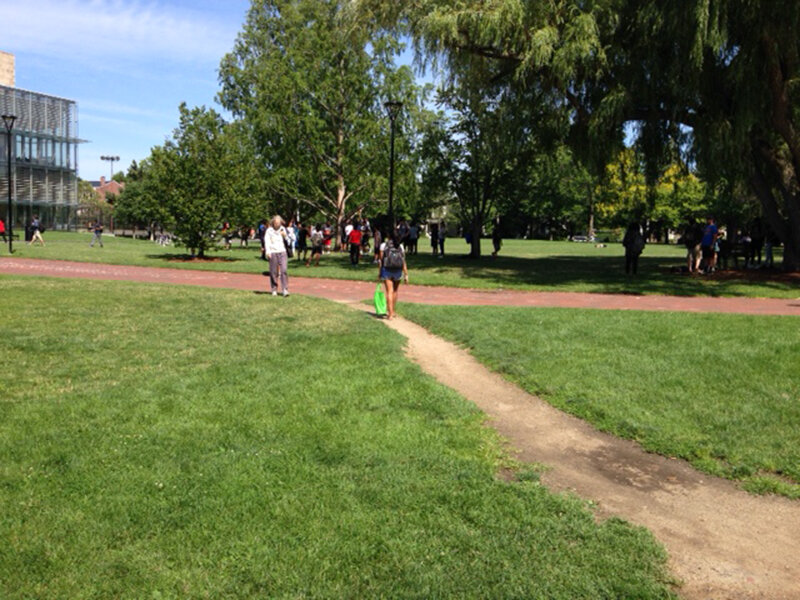Desire lines, in our cities and our language
Loading...
Approaching my public library the other day, I noticed an unpaved path across part of the park out front.
Someone had voted with their feet for a shortcut. In fact, many people had done so. They had collectively declined, again and again over the years, to make the right angle from the sidewalk to the main path to the front door. Opting for the hypotenuse rather than the legs of a right triangle, they had made a new path, which eventually rejoins the main path.
There is a term for this, more poetic than “shortcut.” It is desire line. Here’s a definition from the new-word site Word Spy: “An informal path that pedestrians prefer to take to get from one location to another rather than using a sidewalk or other official route.” Word Spy’s first usage example is from 1987: “Study participants also drew charts of pedestrian traffic to take note of what are delightfully termed ‘desire lines’ – paths actually made by walkers as opposed to those created on the drawing board.”
There is something about wanting to make a public space one’s own that is nearly universal. William H. Whyte, the great urban sociologist who made endless films of people in public spaces, laid much stress on the idea that public outdoor seating is likely to be more heavily used if people can move the chairs around rather than just sitting on benches bolted into place.
The desire lines we draw across lawns have an analogy in the way language evolves, too. Not long ago, Macmillan’s Open Dictionary word of the week was desire path, a synonym for desire line. In a post on the dictionary’s blog, Laine Redpath Cole commented, “[I]t often happens that many people don’t like new usages, incorrect usages, verbing nouns, sinning against syntax, dropping punctuation – but like all desire paths they’ll only become well-trodden if they work and they’ll usually rejoin the main road … and they make language accessible, characterful and exciting.”
The other day a friend asked where I stood on the question of “singular they”: the use of “they” and “their” for “he or she” and “his or her,” respectively.
I said I’m not completely happy with it, but I understand the historical argument for it: The generic “he” was promoted by grammarians who wanted English to follow the same rules as Latin. I said I found it most useful with indefinite pronouns, such as everyone and anyone.
Look back toward the top of this piece, dear reader, and you’ll see I’ve written, “Someone has voted with their feet…” Yes, “someone” is grammatically singular, but “their” covers multiple options as to actual number and gender. And those trying to be sensitive to other people’s gender identities (“She looks like a she but she maybe doesn’t feel like a she”) find use of the singular “they” quite natural.
Whatever the motivation, and however we feel about it, singular they is a kind of shortcut through the traditional grammar rules that is coming to be more accepted all the time. It’s like that shortcut at the library – which rejoins the main path, and may someday get paved.







